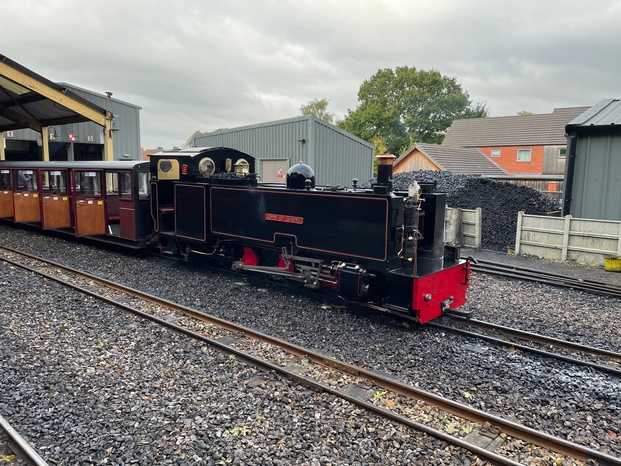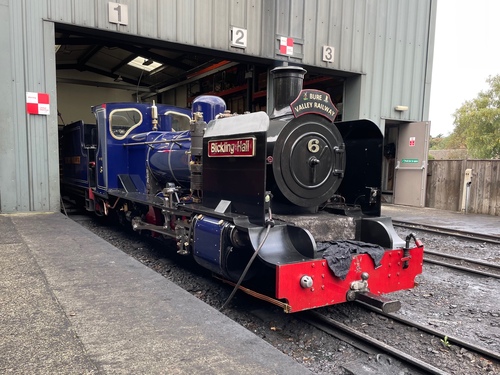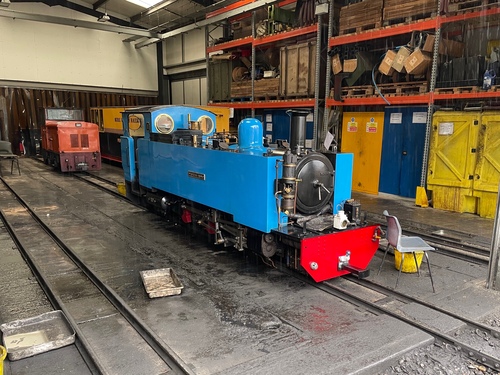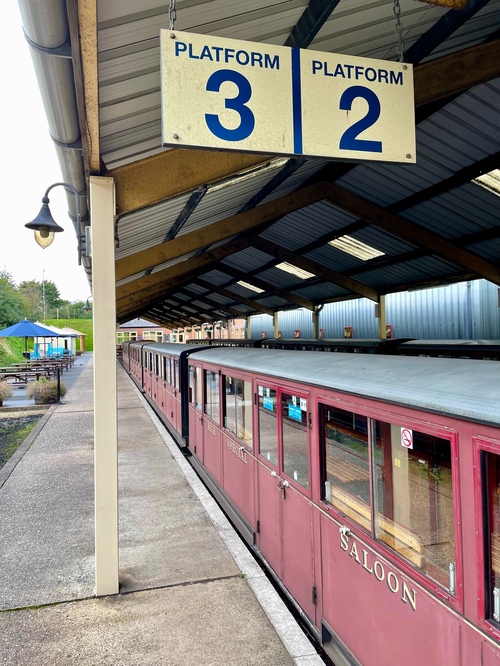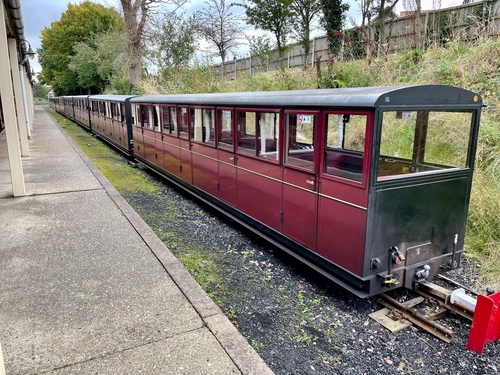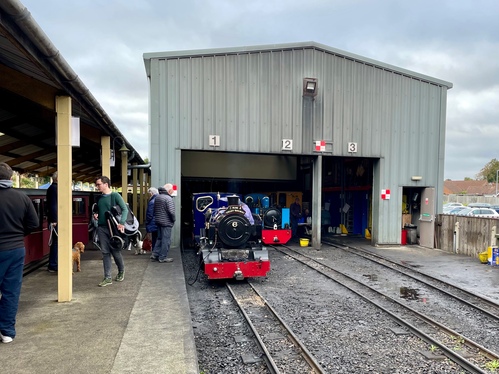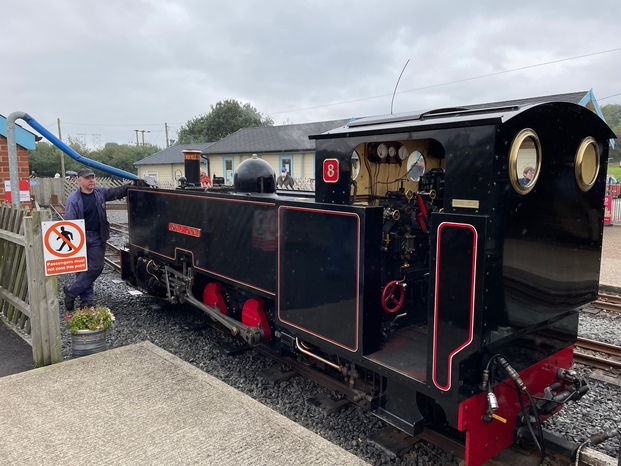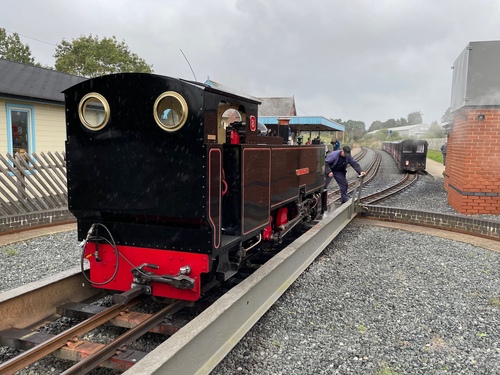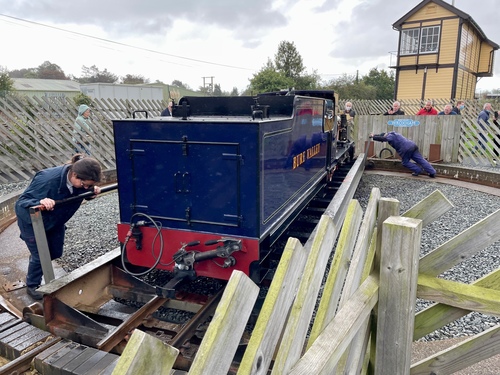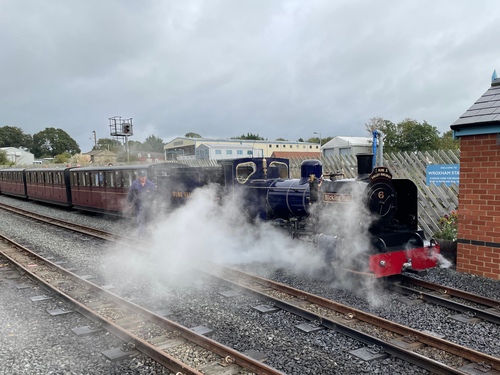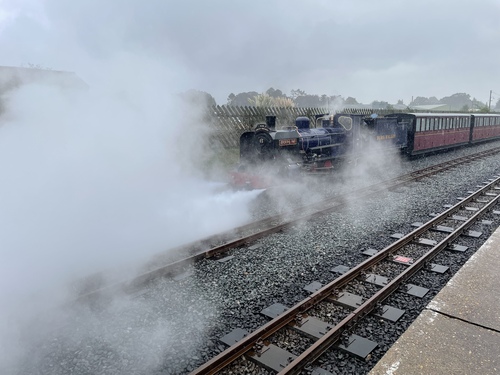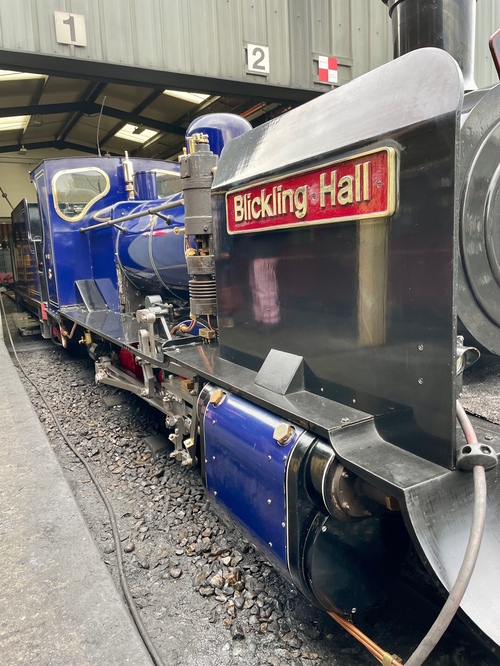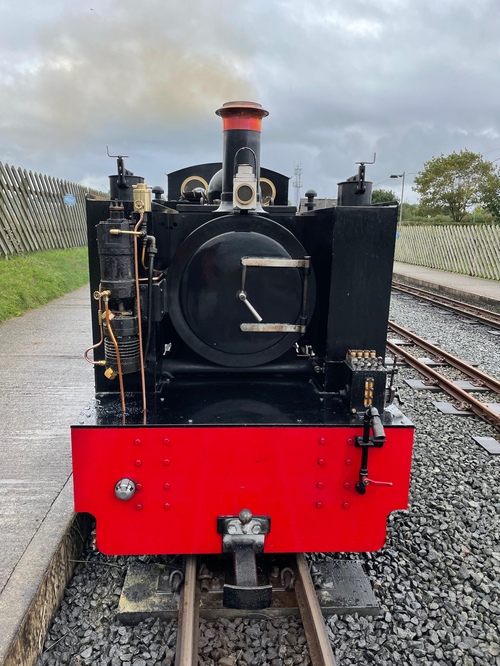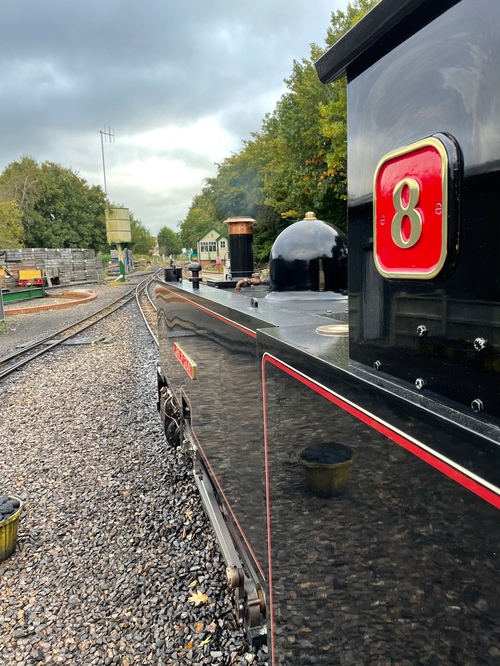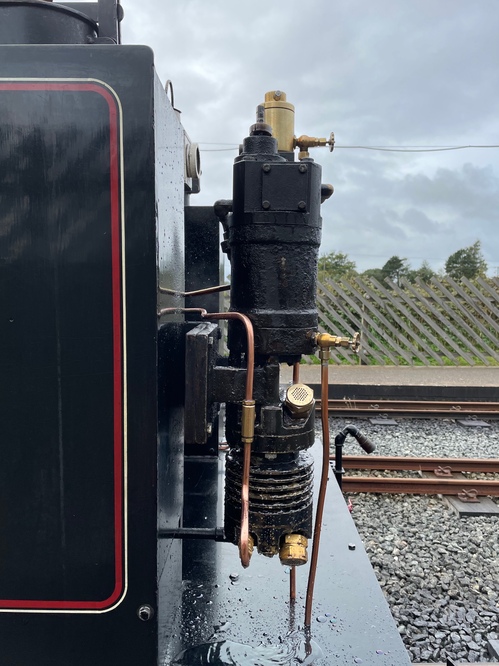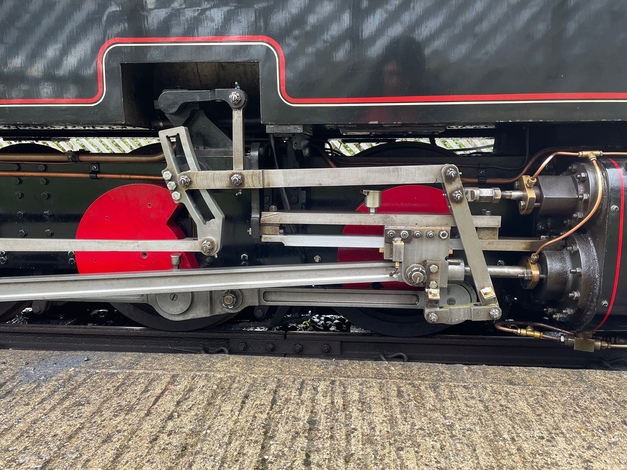A day out at the Bure Valley Railway
Last October, I had a day trip to the Bure Valley Railway, a narrow-gauge heritage railway in north Norfolk. I came across it quite by chance – I was driving through Aylsham to get to a B&B, and I spotted a sign pointing to the railway. I checked the website for a timetable, bought myself a ticket, and set out for a day of steam trains.
I had a lovely time, and this post has a few of my photos.
I started the day at Aylsham, and I arrived pretty early, so I saw the engines being wheeled out of the depot – on this particular day, the black John of Gaunt and the dark blue Blickling Hall were both pulling trains. Despite looking impeccable to my eye, they were still getting regular polishing and touch-ups from the volunteers.
As they were setting up, one of the drivers explained how the engines they’re using are stored during the winter. Their fires are left burning overnight, rather than being extinguished and re-lit each day. This reduces stress on the mechanical components – repeated up-and-down temperature changes would do more damage than keeping them warm.
Aylsham station has both passenger platforms and an engine shed. The carriages themselves are pretty short, to match the engines, and they have a minimal step and several wheelchair spaces.
The line runs from Aylsham to Wroxham, and it’s a 45 minute trip – a proper railway, not just a garden train set. That gave me plenty of time to sit back and enjoy the Norfolk countryside. (I didn’t take many pictures of the scenery, so you’ll just have to take my word for it that it’s pretty.)
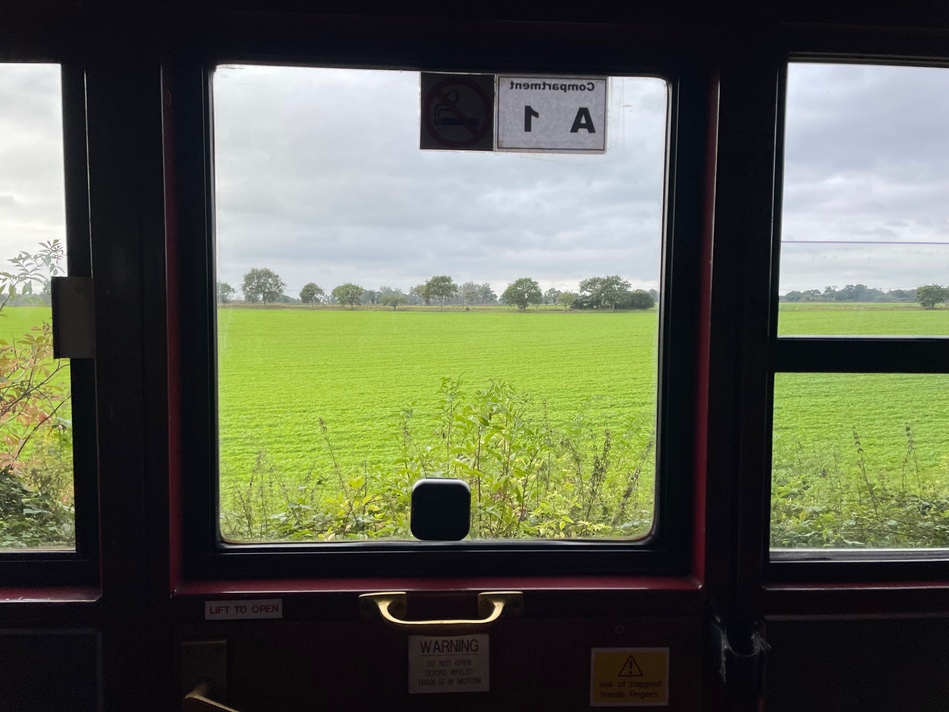
The carriages were quite comfortable, and I had a compartment all to myself. In what’s become a bit of a habit, the colour of my outfit matched the seat covers. I never plan this, it just happens to me. I showed the picture below to a close friend, who described as “[my] author photo”, which feels distressingly accurate.

I got out at Wroxham for a brief wander. I don’t have any strong memories of the village, but I was able to get some lunch and wander into a few shops. I was in a distinctly new place – the train had taken me somewhere, which is what trains are meant to do.
At some point it started raining, so I retreated to the cover of the station, where I got to see the engines being prepped for the return journey. First the drivers topped up the water tanks, then they drove the engines onto a turntable. They had to turn them by hand (which looked like quite a workout!), so the engines were facing the opposite direction, ready to pull the return journey.
In these pictures you can see the drivers standing next to the trains, and hopefully this gives you a sense of scale – they’re still large engines, but small compared to mainline trains:
Adding to the sense that the Bure Valley Railway is a transport link and not just a museum piece, the Wroxham terminus is right next to the mainline Hoveton & Wroxham station. You can walk between the stations, and standard gauge trains pass on the other side of the fence. Of course, the drivers whistle at each other as they pass.
This let me get two of my favourite pictures of the day – trains from both lines in the same shot.
First is this photo of Blickling Hall with a Stadler FLIRT train (a name which I enjoy for somebody’s commitment to a bit; it’s the same acronym in both English and German):
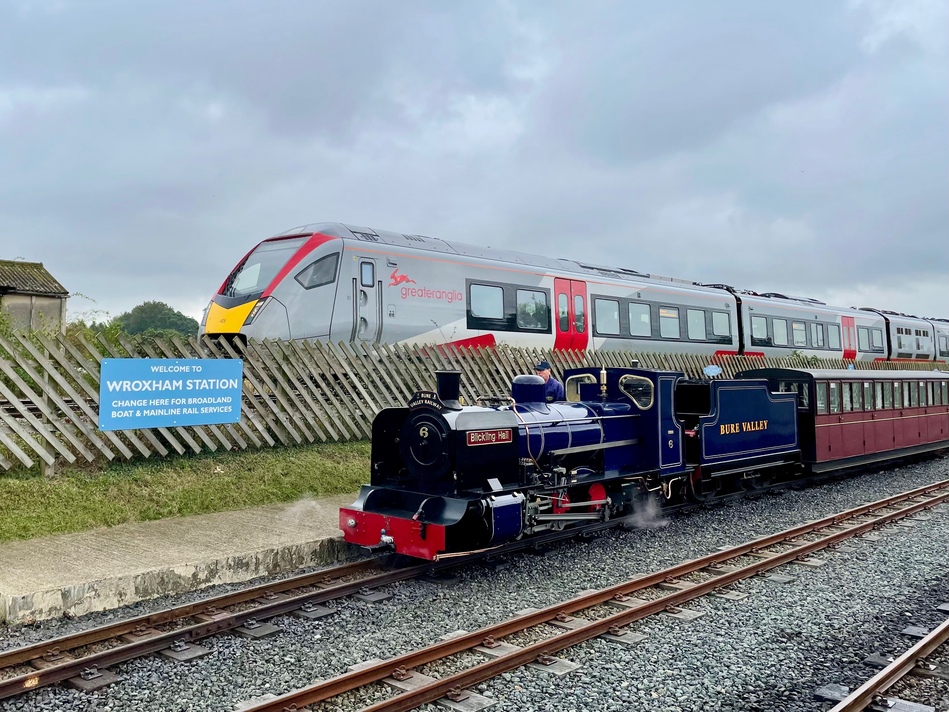
Second is this profile shot of Blickling Hall with a Class 37 diesel, which was pulling a line of tank wagons. I love the contrast of the grimy diesel with the polished steamie:
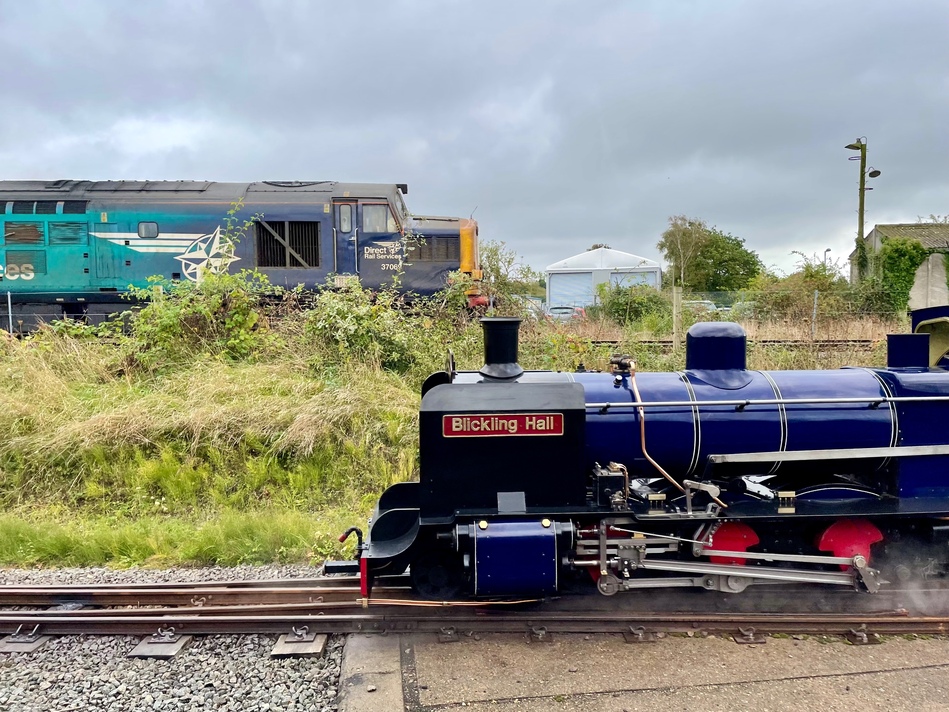
The engines create a lot of steam! My camera could cut through the haze, but in the last photo in this next set, I literally couldn’t see the engine through the fog (or anything else!).
There was a lot of steam coming from two tubes near the front of the engine, not through the main funnel. I remember thinking that was odd on the day – I did see steam coming out of the funnels, so they’re not just decorative – but I don’t know enough about how steam engines work to know why steam comes out of two places.
Once I’d finished taking photos at Wroxham, I got back on the train for the return journey to Aylsham. The weather had become thoroughly grey and rainy, so the scenery wasn’t quite as pretty, but it was still a nice trip.
This Tuesday was actually the first day my employer had mandated a return to the office, and if I hadn’t been on leave, I’d have been on a packed commuter service heading into central London. Even with overcast skies, a steam train through Norfolk was a much better choice.
I really enjoyed seeing the trains at work, and I’m decidedly not a pro photographer – but I still enjoyed taking a few “artsy” shots. Hopefully these show what impeccable condition the engines are kept in – even the tiny details are clean and shiny.
They’re really good looking trains.
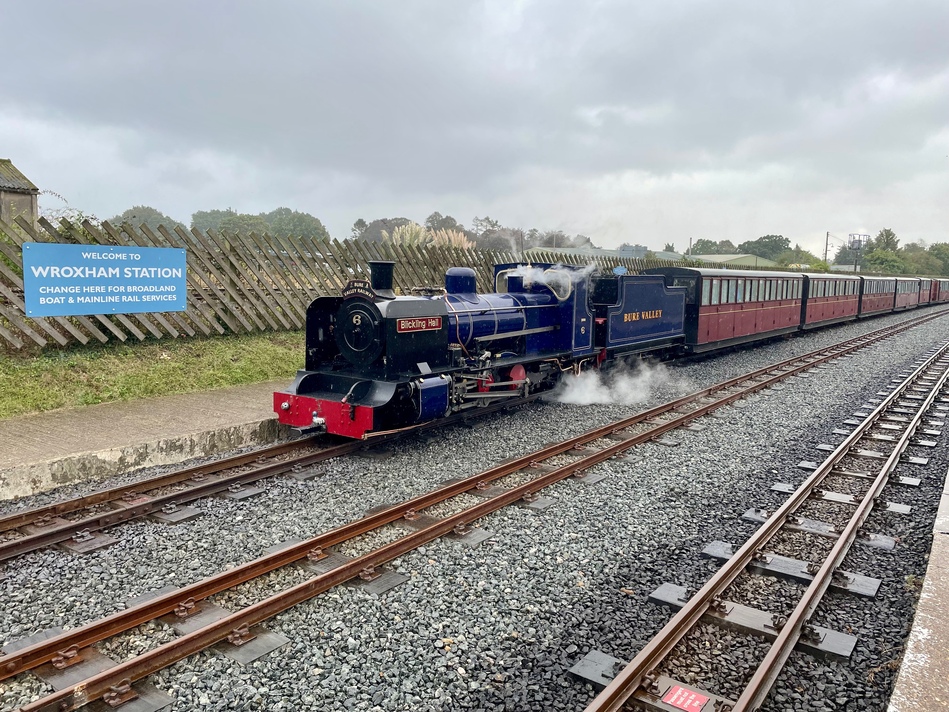
All the volunteers and staff I met were lovely. I didn’t talk to many of them – I’m shy, and they were working – but those I chatted to were very nice and generous with their knowledge, and keen to show off their railway. Some heritage railways have a bit of a gatekeeper-y “real train geeks only” vibe, but I got none of that here.
I’ll end with a photo of me, with windswept hair and a big smile, another favourite from the day:
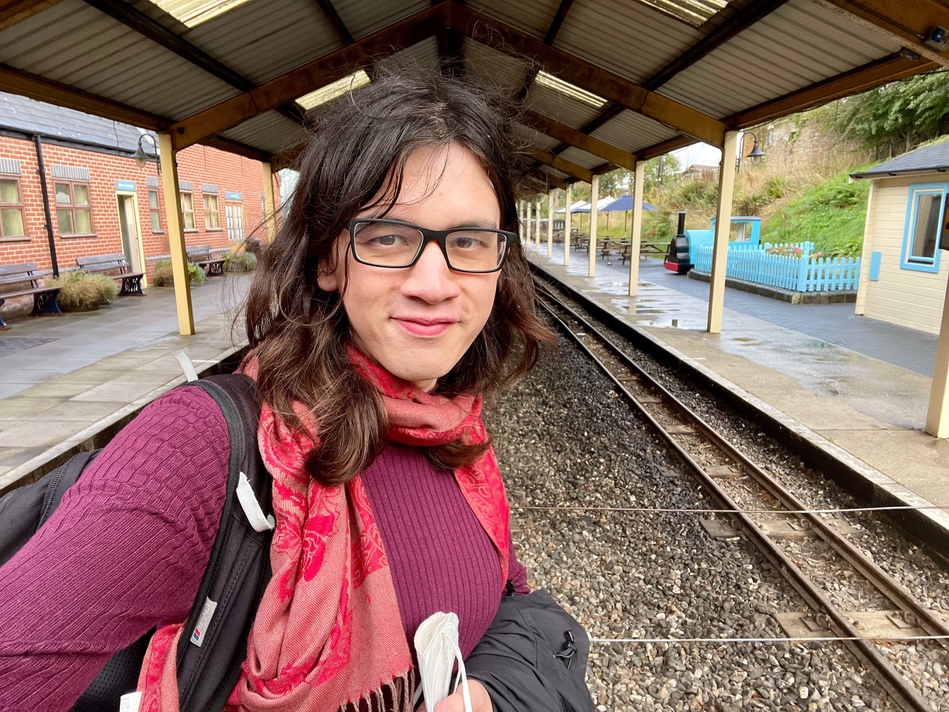
I had a wonderful day out – beautiful enginers, gorgeous scenery, lovely volunteers.
There are only a few running days left on this year’s timetable, but if you enjoy trains and you can find a time I’d really recommend a visit.
